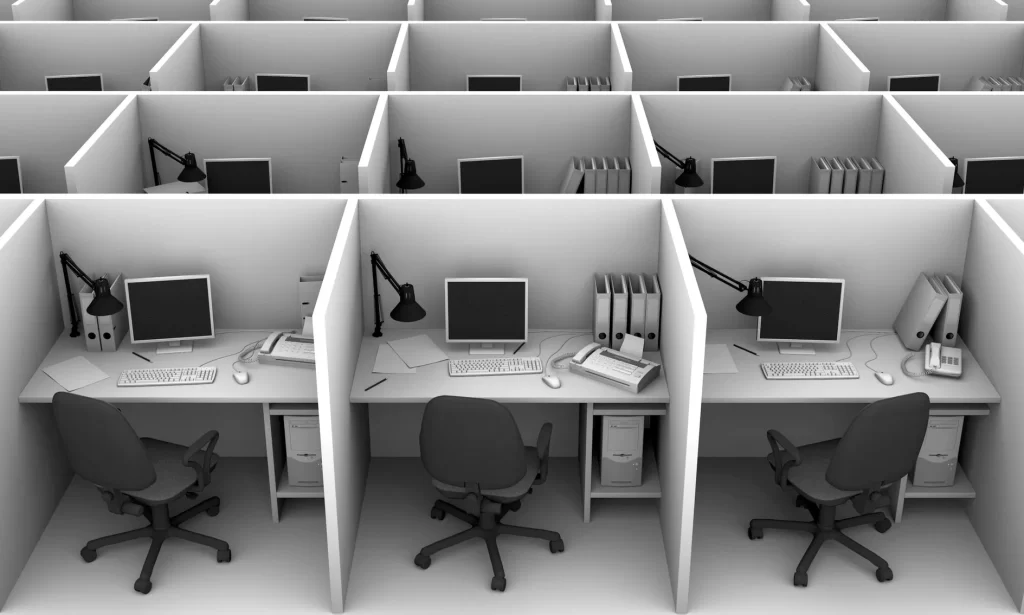03 Sep Will a workplace refurbishment attract people back into the office?
Making the office better than home
Commentary on return-to-office mandates certainly heated up in recent weeks following the NSW Premier’s directive for employees across the public service to work principally from an approved workplace. While this mandate appears to be less about concerns relating to employee productivity and more to do with the reactivation and revitalisation of the city centres [a whole other conversation!], employee reactions to mandates remain unchanged.
While some organisations are mandating employees return to the office, others are exploring a motivation-based approach, with the state of their workplace being a key consideration.
And, it’s an important strategy.
The average workplace experience, as measured through the Leesman Index score (Lmi) has increased by nearly four points from 64.3 pre-pandemic to 67.9 post-pandemic. Organisations are clearly investing in workplace improvements to make the office more appealing.
However, according to the Leesman study the average knowledge worker is still supported better in the average home than in the average office with the Home Leesman Index (H-Lmi) scoring 77.8.
“The average knowledge worker is still supported better in the average home than the average office”
The findings shine a light on the inability of offices, which are designed for the purpose of ‘work activities’, to compete with homes which have been traditionally designed for the things we do ‘outside of work’.
So, what do workplaces need to offer to make them more appealing than working from home?
In COMUNiTI’s experience, the biggest friction-point employees have with offices today is that they are not designed to support modern-day, hybrid work.
Many workplaces still offer individual workstations that are lined up in rows of desks in large open plan spaces, coupled with a few offices for those higher up the hierarchy, and a sprinkling of meeting rooms.

This layout leaves little space for other amenities.
And the problem is, it’s these other amenities that will make the office experience better than working from home.
COMUNiTI’s clients continue to echo the research when they explain the three key reasons why their employees want to come into the office in a hybrid world:
- Connection: to their colleagues and the organisation
- Collaboration: for learning and development, mentoring, and project work
- Socialisation: feeling included, building relationships
Workplaces that are not fit for these purposes create a poor employee experience, and according to the Leesman study, this is particularly true for those in high-complexity roles where work consists of a large variety of work activities throughout the day.
Connection: employees want to connect back into the organisation and with their team when they come into the office.
Key reflections:
- Does your workplace design amplify your company purpose, values, and vision? Do employees feel like the office helps them reconnect with the shared mission and what’s important? Or, does it feel devoid of inspiration and meaning?
- Does your office help people connect across teams or does the layout reinforce silos and individual work, which otherwise, could be done from home?
Collaboration: work today is far more multidisciplinary and collaborative, so project and functional teams need spaces to come together to brainstorm, ideate, create, and plan.
Key reflections:
- Does your floorplate have dedicated spaces for high-energy, collaborative teamwork? Does the furniture in these spaces encourage noise and inclusivity through the sharing of ideas? Are there tools in these spaces for teams to visualise complex concepts and map thoughts? Do these tools integrate seamlessly with your technology stack? Or, is it just easier to collaborate through Teams, from home?
- Are collaborative zones separated from quiet work zones to minimise noise and distraction? Or, do people feel they need to work from home to concentrate, because collaboration has to happen in the general work area as there are no other suitable spaces?
- Do your hybrid team work patterns ensure that leaders are accessible (and not in back to back meetings all day) when employees do come into the office? What are the social contracts at a team level that mean the commute into the office is worth it because the days are filled with learning, mentoring and development opportunities?
Socialisation: thankfully there’s wide-recognition of the importance of socialisation at work and it’s no longer seen as wasting time. Socialisation helps form connections and foster trust, which in turn helps support psychological safety and feelings of inclusion and belonging.
Key reflections:
- Does your floorplate have spaces for people to catch up, informally?
- Does the flow of your floorplate encourage socialisation? For example, do employees enter the office through a busy kitchen cafe, encouraging them to start their day chatting with colleagues? Or, do employees enter through a quiet reception lobby and head straight to their individual workstation?
- Are there spaces, of varying sizes, where people can socialise throughout the day without distracting others?
In terms of floorplate specifics, the Leesman study cites seven things that outstanding workplaces offer, compared to average workplaces:
- Atriums and communal areas
- General decor — the furniture, fittings, colours, and materiality
- Quiet rooms for working alone or in pairs
- Tea, coffee, and other refreshment facilities
- Plants and greenery
- Informal work areas / break-out zones
- A variety of different types of workspaces
So, will a new workplace attract people back into the office?
While it’s not a silver bullet, there’s no denying that by understanding the purpose of your office today and what employees value most about the workplace, you’ll be able to align your layout and design choices to better meet their expectations about what makes ‘going to work’, worth it.
If you’d like to chat more about how to make the office a better option than working from home, get in touch!
#futureofwork #workplacestrategy #workfromhome #wfh


